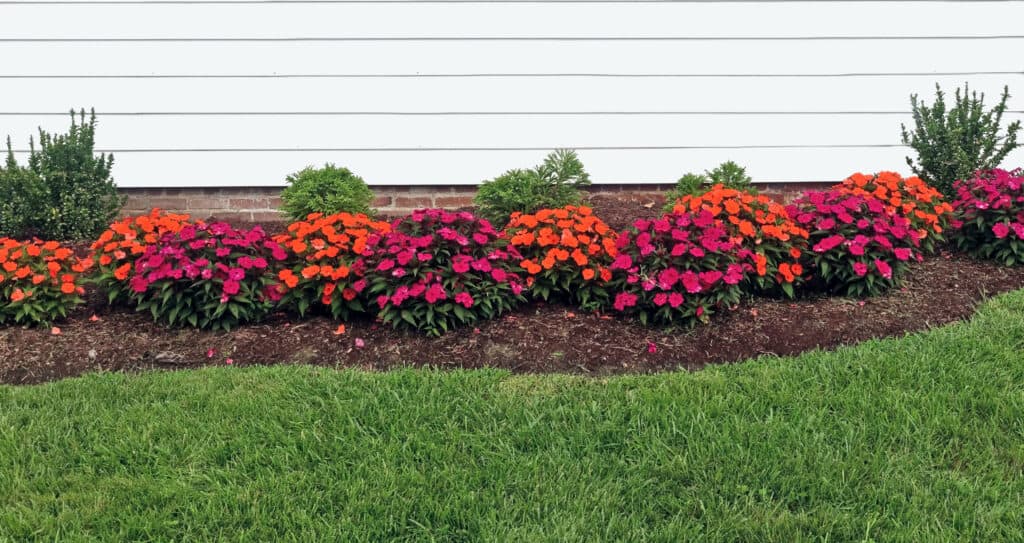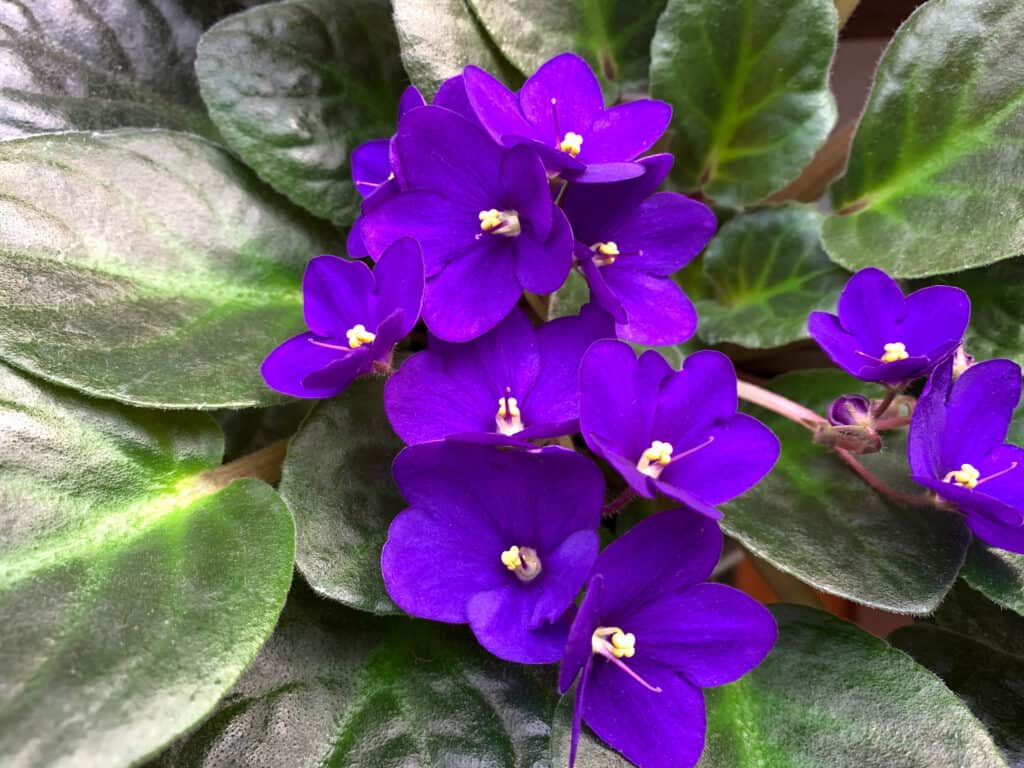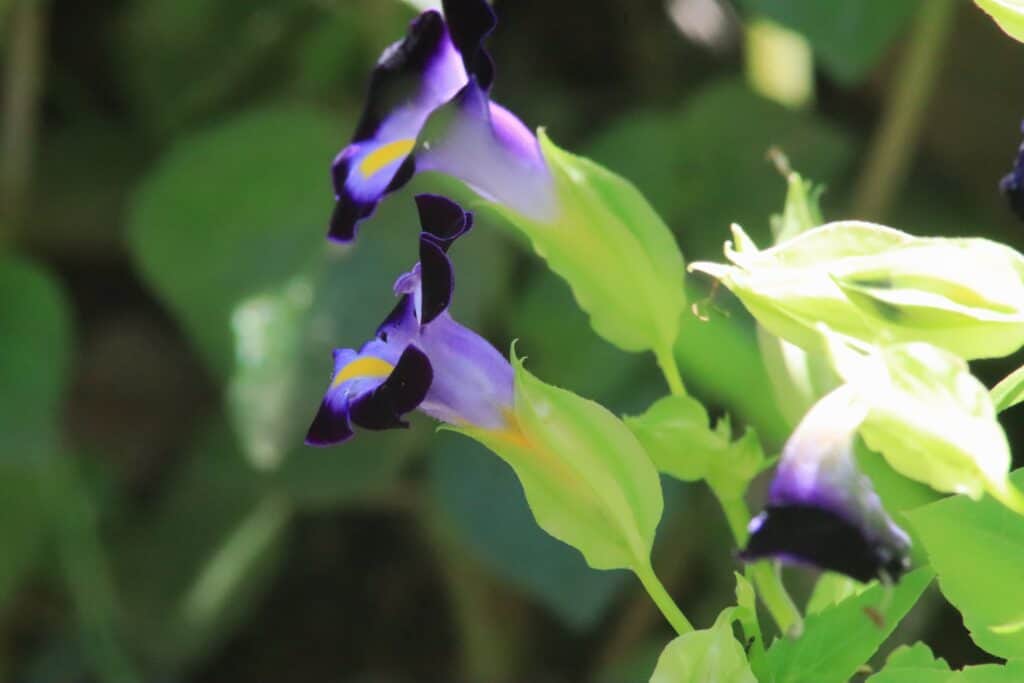Sprout, grow, flower, seed, and wilt; annuals do it all in a single season. In full bloom, the right annual flowers can brighten up any shady spot in your garden. Take, for instance, wax begonias; they’re among the most shade-tolerant of all flowering plants. And impatiens come in a rainbow of colors and will flourish even in deep shade. What other annual flowers for shade should you know about? Read on to find out.
1. Impatiens

Impatiens come in bright colors and are fantastic plants for flower beds and borders.
©iStock.com/Joe_Potato
One of the most popular bedding plants is impatiens, and it’s no wonder why. They come in a wide range of colors, they’re relatively easy to care for, and they bloom prolifically from spring until fall. But what is the science behind these pretty flowers?
The vast majority of impatiens grown as bedding plants are hybrids. They’re bred to be compact and to produce an abundance of flowers. Most impatiens plants will bloom continuously if they receive enough light and water.
The flowers of impatiens are one of the most complex annual flowers for shade. Each flower has five petals. Four of the five petals fuse to form a tube. The fifth petal is the labellum, and it attracts pollinators. The nectar-producing glands of the flower sits at the base of the labellum. Pollinators such as bees must insert their mouthparts into the flower to reach the nectar.
While impatiens are not true annuals (meaning they will not bloom for only one growing season), they are typically treated as annuals in gardens outside their native range. In colder climates, impatiens are often planted in containers to come indoors when frost is on the forecast.
2. Wax Begonias

The wax begonia is named for it’s waxy leaves which reflect light and prevent water loss
©Halit Omer/Shutterstock.com
Wax begonias are one of the most popular houseplants, and it’s easy to see why. With their glossy green leaves and bright red, pink, or white flowers, they add a touch of elegance to any room. But there’s more to these plants than meets the eye. There’s fascinating science behind wax begonias.
Wax begonias get their name from the waxy coating on their leaves, which helps to reflect light and prevent water loss. This coating is also responsible for the plant’s glossy appearance. The leaves of wax begonias are also unique in that they have a high surface area-to-volume ratio. This means they can absorb more light and convert it into energy, which is essential for photosynthesis.
So the next time you admire a wax begonia, take a moment to appreciate the amazing science that makes it possible. From its glossy leaves to its bright flowers, this plant is a true wonder of nature.
3. African Violets

The African violet plant is usually a deep, stunning purple color
©Lapa Smile/Shutterstock.com
African violets are available in many colors, from bright pink to deep purple. They are relatively easy to care for, and they make a great addition to any home. However, when it comes to watering, African violets are picky. Too much water can lead to root rot, so it’s important to let the soil dry out between waterings. African violets also prefer a humid environment, so be sure to mist them regularly. If you live in a particularly dry climate, you may need to invest in a humidifier.
African violets are great annual flowers for shade. Direct sunlight will scorch their leaves. But they also don’t want to stay in the dark. Instead, look for a spot they can receive indirect sunlight. If you’re having trouble finding a spot with enough light, you can try using grow lights.
Finally, be sure to fertilize your African violets regularly. A good rule of thumb is to fertilize them every other week during the growing season and every month during the winter. With proper care, your African violets will flourish and provide you with beautiful blooms for years to come!
4. Dusty Miller

The dusty miller is named for it’s silver-grey leaves
©Oxik/Shutterstock.com
Dusty miller is a beautiful annual flower perfect for adding a white contrast to any garden. Despite its name, dusty miller is not a true miller. It gets its name from the silvery-gray color of its leaves, which are covered in a fine layer of dust. The flowers are small and white, and they bloom in the spring and summer. Dusty miller is a fairly low-maintenance plant, and it can thrive in both full sun and partial shade. It is also resistant to many common pests and diseases.
5. Torenia

With blue, white, or purple petals, torenia is often used as a bedding plant
©iStock.com/Andi Rahim
Torenia is a genus of annual flowering plants native to tropical and subtropical regions of the world. The plants in this genus are also known as wishbone flowers or bluewings. Torenia flowers are typically blue, purple, or white, often used as bedding plants or in containers. The plants in this genus typically prefer shady areas, making them an ideal choice for gardens that receive little direct sunlight. Torenia is also a relatively low-maintenance plant, requiring only occasional deadheading to keep it looking its best. With their showy flowers and easy care requirements, torenia annuals are a great choice for gardeners starting a shade garden.
Up Next
The photo featured at the top of this post is © Halit Omer/Shutterstock.com
Sources
- Missouri Botanical Gardens, Available here: https://www.missouribotanicalgarden.org/gardens-gardening/your-garden/help-for-the-home-gardener/advice-tips-resources/visual-guides/annuals-for-shade
- Illinois State, Available here: https://web.extension.illinois.edu/beyond/directory_annuals_shade.cfm
- Clemson, Available here: https://hgic.clemson.edu/factsheet/plants-for-shade/
Thank you for reading! Have some feedback for us? Contact the AZ Animals editorial team.







